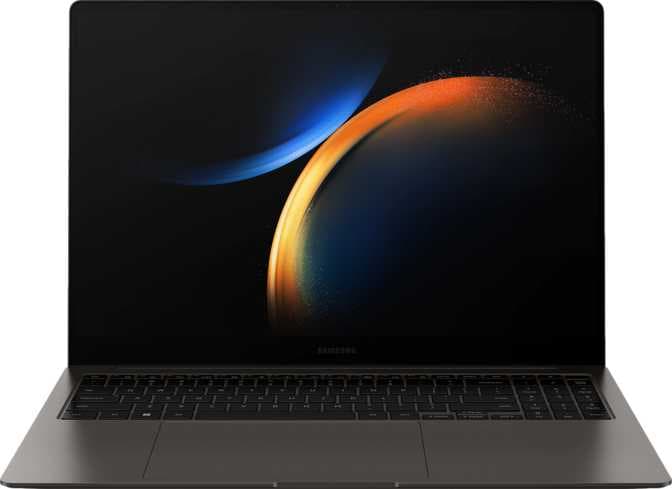Inicio/LG GRAM 2-IN-1 14T90R 14" WUXGA INTEL CORE I7-1360P 2.2GHZ / 16GB RAM / 1TB SSD

LG GRAM 2-IN-1 14T90R 14" WUXGA INTEL CORE I7-1360P 2.2GHZ / 16GB RAM / 1TB SSD
Rendimiento
Pantalla
Tarjeta grafica
Autonomía
Almacenamiento
Conectores
 the-cheapest
the-cheapest
Desconocido
Características LG GRAM 2-IN-1 14T90R 14" WUXGA INTEL CORE I7-1360P 2.2GHZ / 16GB RAM / 1TB SSD
TipoIPS
Densidad de pixeles161 ppi
Tamaño14 "
RAM16 GB
Capacidad1024 GB
Historial de precios
mín
máx
fijo
Productos con características similares

Laptops
SAMSUNG GALAXY BOOK4 ULTRA 16" INTEL CORE ULTRA 7 155H 1.4GHZ / NVIDIA GEFORCE RTX 4050 LAPTOP / 16GB RAM / 1TB SSD
Precio
$39,990

Laptops
MSI GP76 VECTOR 12UH-297 17.3" FHD INTEL CORE I7-12700H 1.7GHZ / NVIDIA GEFORCE RTX 3080 LAPTOP / 32GB RAM / 1TB SSD
Precio
$67,250
Comentarios
Ednumero
Quote Quote from: me Quote from: me Quote from: me Niko, please, you depress me. I thought we were past this. https://www.notebookchat.com/index.php?topic=185151.msg564862#msg564862 https://www.notebookchat.com/index.php?topic=180160.msg554088#msg554088 https://www.notebookchat.com/index.php?topic=175493.msg544222#msg544222 On an alternate note, I must say I am extremely happy with what I only presume is a genuine effort on part of the reviewer to align the matrix correctly under the microscope in all three shots! Translate this over to the smartphone space and you'll be well on your way.
Hotz
That score of the iGPU in Witcher 3 looks "gigantic"... at least in comparison to the other ones in the list. What's up with that? Has Intel released some magical driver?
NikoB
Quote for temperature reasons Quote and further the same author states: That is, at the beginning the author assures that there is temperature throttling in the maximum performance profile, and then shows a picture where these drops in performance on the CBR15 looped test are miraculously not observed. A note regarding the 17" model - despite the fact that it has a larger body, the overall weight is the same as the 16" model, which means that LG saved on radiators. Hence the consequences (albeit a clearly inadequate difference with the same processor, which again casts doubt on the reliability of the results laid out by the author for the maximum performance profile of the 16" model, and this correlates with doubts due to the absence of clearly visible thermal throttling on the graph, although previously the author himself assures us of this) - despite the huge difference in consumption of 22W for PL1 for the 17" model and 35W for the 16". It's clear that LG made a stupid decision (in any case) to reduce the weight of the 17" model to 16" with a loss in performance. Although the difference shown between them is clearly subject to doubt, for the reasons I stated above. The transition to flickering OLED (with a color resolution clearly lower than stated and with a glossy glare screen and an increased burn-in rate) is undoubtedly a huge disadvantage for people who work a lot behind the screen. LG should abandon AMOLED screens and return to IPS - what prevents it from installing its vaunted Black IPS panels with a native contrast of more than 1800:1, which is more than enough for a work panel and multimedia entertainment. And also think about installing an A-TW polarizer, the patent for which they have long held, thereby eliminating the unpleasant Glow effects. The memory controller is poorly balanced in terms of memory write speed. The failure of tuning is obvious. Installing a bufferless SSD from Samsung as a system drive is again a shame for LG, given the typical prices for this series, especially outside of the "discount" season. In the 4k@60fps video playback test, the shame is obvious, both Intel and x86 - a completely primitive, even banal task for 2024, requires a monstrous 65% of iGPU resources. This is NOT normal even for 2020, four years ago - the load should not exceed 10%, both on the CPU and on the iGPU. In this matter, Qualcomm clearly wins several times in terms of consumption and, therefore, the load on the SoC in this mode.



